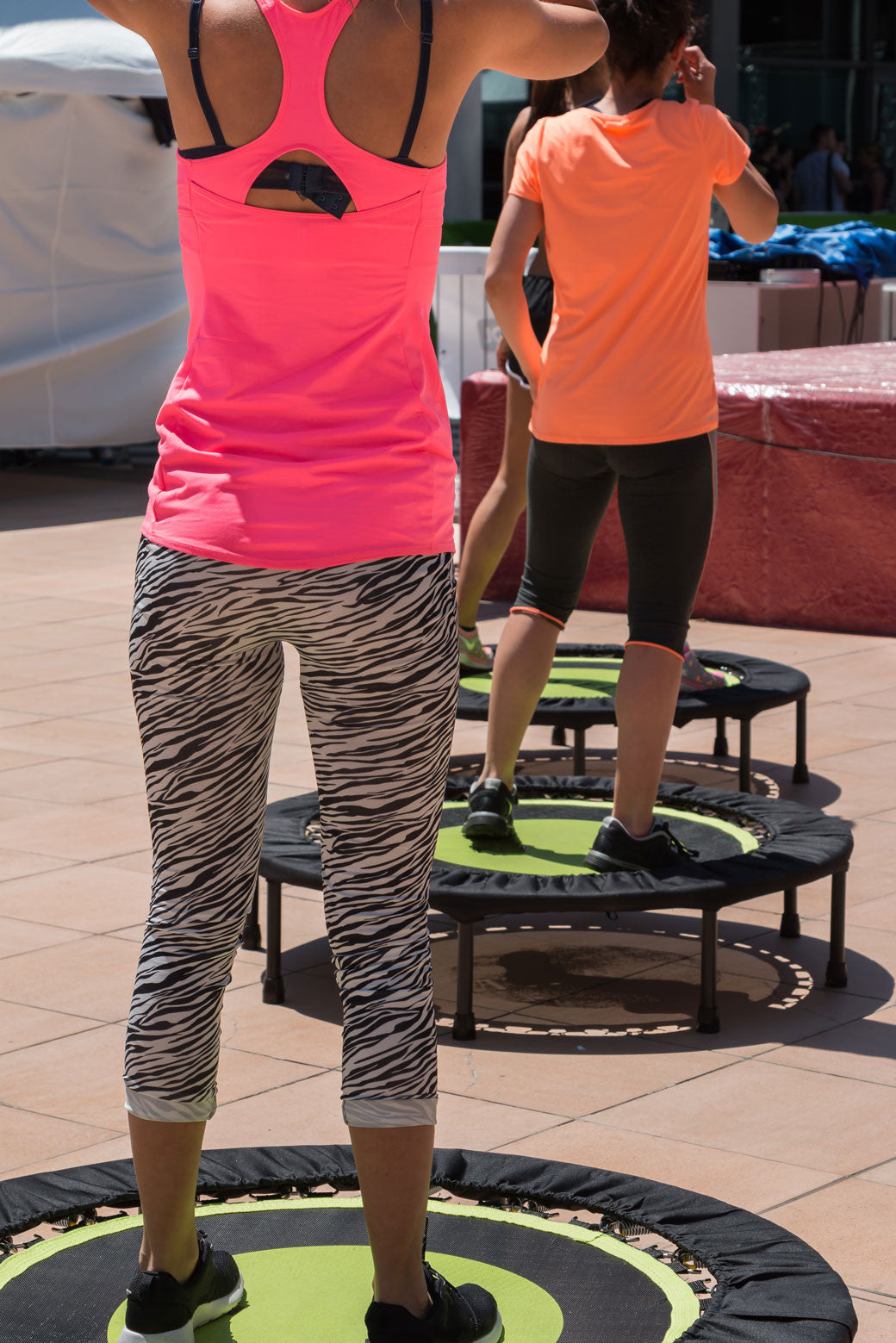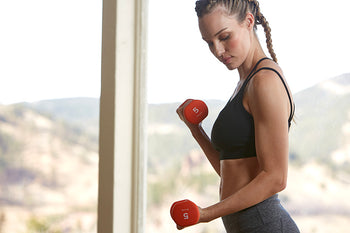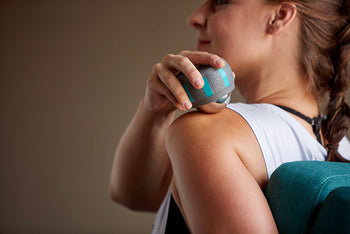Trampoline Fitness: Can You Bounce Your Way to Better Health?

by: Tamara Grand
Think you outgrew trampolines when you hit your teens? Think again! Rebounders, or mini-trampolines, have been slowly increasing in popularity among exercise enthusiasts. Available for purchase at your local fitness or online fitness store, they can be used at home, at the gym and even en masse in group exercise classes.
Recently, I participated in my first trampoline workout class. What fun! Not only did jumping on a bouncy surface make me feel energized and uplifted, it elevated my heart rate, fatigued the large muscles in my lower body, and left me super sweaty.
Curious to learn more about the potential health benefits of rebounding, I visited the library to see what exercise scientists and physiotherapists had to say about trampoline fitness.
To my surprise, relatively few scientific studies have addressed the question. Among those studies that explicitly examined the effects of rebounding on health and fitness, most were focused on trampoline-related injuries. Only a handful documented potential fitness benefits.
Benefits of trampoline fitness
Improved cardiovascular health: Studies of both sedentary, middle-aged women and highly trained athletes alike demonstrate a modest but significant improvement in cardiovascular fitness with regular, 30-minute trampoline workouts. These gains, however, were not significantly different from those provided by treadmill workouts or more traditional forms of cardiovascular exercise.
Increased leg strength: College students who performed just 30 minutes of rebounding twice a week experienced significant increases in both leg power and leg strength. Similar results have been reported by gymnastics coaches, who regularly include trampoline work in their athletes’ training programs.
Perceived as easier than traditional aerobic activities: A small but interesting study found that, although the heart rates of sedentary women increased with increasing bounce rate, their rating of perceived exertion did not. This suggests that bouncing may feel easier and be more pleasurable to non-exercisers than other forms of cardiovascular exercise.
In addition to the benefits listed above, proponents of trampoline workouts also cite improved balance, core strengthening, better performance in sports requiring multi-directional movement, enhanced coordination, lymphatic drainage, and weight loss as reasons to include trampoline fitness in your fitness plan.
Risks associated with trampoline use
Common injuries associated with rebounding include orthopedic and neurological impairments such as sprains, shin splints, fractures and dislocations. Soft tissue injuries, including bruising and lacerations, may also occur as a result of landing on the non-elastic edges of the trampoline.
I witnessed this firsthand in the class that I participated in. My exercise partner rolled her ankle slightly during a simple jumping drill and was left swollen and limping for several days afterwards.
For most people, however, the potential benefits outweigh the risks — risks that can be reduced by following some simple safety tips.
Tips for a safe trampoline workout
Set up trampolines on a flat, non-slippery surface, well away from walls and furniture; the vibrations caused by bouncing can result in lateral movement of the trampoline itself.
Ensure that shock-absorbing pads completely cover the springs, hooks and frame; many of the injuries associated with trampoline use are a direct result of landing on an unprotected metal frame.
Wear shoes with good ankle support; though gymnasts jump barefoot, most novice trampoline users will benefit from the lateral ankle support of a properly fitting running shoe.
Minimize the vertical height of your jumps; low, controlled jumping will not only increase the intensity of your workout, but also ensure that your feet land in the correct place on the trampoline.
Is trampoline fitness for you?
If you’re already physically active, rebounding can be safely added to your fitness routine as an alternative to regular workouts. While it may not provide any more cardiovascular benefit than other forms of aerobic activity, cross training is known to enhance overall fitness and help prevent repetitive stress injuries.
If you’re not physically active, perhaps because you perceive exercise to be a chore, the "fun" aspect of using a rebounder may be just the incentive you need to give up your sedentary ways!
Also in Blog

Body Peace & Personal Empowerment

Yoga for Swimmers: Poses for Strength and Mobility







